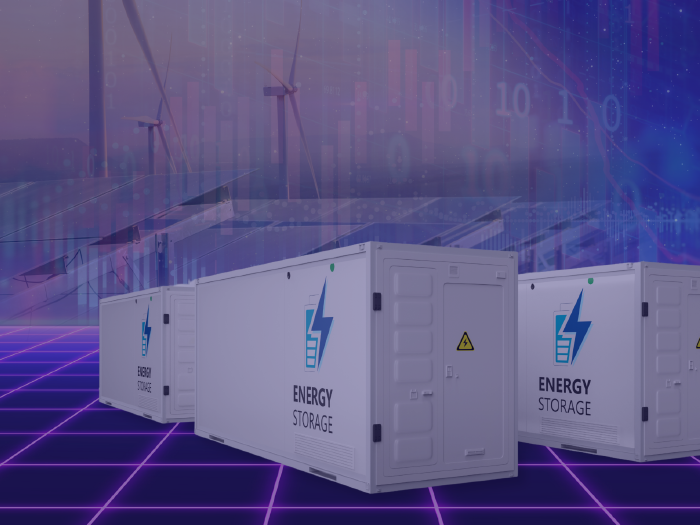Energy Glossary | Comprehensive Definitions and Terminology
Expand your knowledge and stay informed with our expertly curated glossary
Welcome to GridBeyond’s Energy Glossary! Whether you’re new to the world of energy management or a seasoned professional, our comprehensive glossary is here to empower you with the knowledge and understanding of key terms and concepts in the energy industry. From renewable energy sources to demand response, forecasting, trading, and grid optimization, we’ve curated an extensive collection of definitions to help you navigate the complexities of the evolving energy landscape.
At GridBeyond, we are passionate about driving the transition towards a sustainable and efficient energy future. We understand that keeping up with the latest industry jargon and terminology can be challenging, which is why we have created this glossary as a valuable resource for businesses, energy managers, and individuals seeking to enhance their understanding of energy-related topics. Whether you’re looking to decipher acronyms, explore the intricacies of demand-side flexibility and energy trading, or simply expand your energy vocabulary, our glossary is designed to be your go-to reference.
So, dive in and explore our energy glossary to gain a deeper understanding of the terms and concepts that shape the energy landscape. From traditional energy sources to cutting-edge technologies and emerging trends, we’ve got you covered. Expand your knowledge, make informed decisions, and join us on the journey towards a sustainable energy future.
The proactive adjustment of electricity consumption by consumers to align with system conditions, such as supply availability or price signals. This can involve load reduction or load shifting.
Also known as ‘Real Power’ or simply ‘Power’. Active power is the rate of producing, transfer or using electrical energy. Measured in watts and often-expressed in kW or MW.
An agreed amount of electrical load for a property, as stated in the property’s Connection Agreement with the local Distribution Network Operator (DNO). Also known as Available Supply Capacity (ASC).
An entity that brings together multiple electricity consumers and coordinates their participation in demand response programs. Aggregators pool the electricity demand reduction capabilities of individual consumers and offer them as a single resource to grid operators or utilities.
Where a customer is interrupted or tripped off within the parameters and provisions of their contract.
Electricity that changes direction periodically. The period is measured in Cycles per Second (Hertz, Hz).
Support services required to maintain the stability and reliability of the power grid. Demand response can be considered as an ancillary service since it helps balance electricity supply and demand in real-time.
It is the sum of the annual consumption of all meters on a site. This comes from National Grid and is based on historical usage from previous years. Measured in kWh (electricity) or Therms (gas).
The practice of storing energy when prices are low and selling it when prices rise, often managed by AI.
AMR is the term given to a system that provides automatic meter readings remotely. It uses telephone technology and holds the ability to transfer data into a billing system.
Availability (kVA) or Agreed Capacity refers to the limit of capacity for a site. E.g. if a site has an Availability of 150 kVA then maximum demand should not exceed that figure at any time. It is set and charged by the local Distribution Network Operator (DNO), according to the kVA of a premise. This fee covers investment and maintenance of the electricity network and can also be called the Capacity Charge. Customers pay a fee (per unit) according to the agreed capacity for that site. In theory, maximum demand should not exceed the agreed capacity at any time.
Auxiliary power generation capacity that can be deployed when there is a shortage of electricity supply or during emergencies. Backup generation systems can include generators or storage systems that provide power during demand response events or grid disruptions.
An organisation responsible for maintaining the balance between electricity supply and demand within a specified area or region. Balancing authorities ensure grid reliability and may use demand response resources to help manage imbalances between supply and demand.
The mechanism used by the National Grid Company to balance the supply and demand of electricity.
A reference point or historical measurement used as a basis for comparison when evaluating the effectiveness of demand response. Baseline values represent the expected electricity consumption of a consumer or group of consumers in the absence of any demand response actions.
Base load is the level below which electricity demand never drops, i.e. a site with a high maximum demand of 750kVa whose demand never drops below 250kVa would have a base load of 250kVa.
The price at which a demand response participant offers their load reduction capability in response to a demand response event. Bid prices reflect the cost or value associated with reducing electricity consumption and are used to determine the compensation paid to participants.
Trading whereby two parties (for example a generator and a supplier) enter into a contract to deliver electricity at an agreed time in the future.
The Balancing and Settlement Code contains the rules and governance arrangements for electricity balancing and settlement in Great Britain. The code covers the metering of the physical production and demand for electricity from generators, suppliers and interconnectors in relation to their contracted positions. And it also covers the calculating and settling of any imbalances when delivery or offtake doesn’t match those positions.
The BSUoS charge recovers the cost of day-to-day operation of the transmission system.
A scheme, e.g. covering CO2 or green house gas emissions, in which the quantity of pollutant is fixed and participants trade emission allowances to meet the cap at lowest cost.
A set charge by the local Distribution Network Operator (DNO) for investment and maintenance of the electricity network, based on the Agreed Capacity of a property. This can also be called the Availability Charge.
A mechanism such as a capacity obligation that requires electricity industry participants to provide a defined level of generating capacity.
A capacity market creates a financial incentive for electricity providers to invest in and maintain sufficient capacity to reliably meet future electricity demand. By offering payments for capacity, the market aims to ensure a reliable supply of electricity, especially during peak demand periods or in situations where unexpected events affect power generation. Typically, capacity markets work through a competitive auction process. The system operator or a regulatory authority determines the forecasted demand and sets a target level of capacity required to meet that demand reliably. Electricity providers then bid to offer their capacity at a certain price, and the providers with the lowest bids are selected until the target capacity is reached.
A credit or permit arising from a greenhouse gas emissions reduction scheme, such as emissions trading, JI or CDM. Emissions are controlled by setting a cap on total emissions and allowing the market sector(s) to reach an economically balanced response via trading of emissions allowances.
A measure of the amount of carbon dioxide or CO2 emitted through the combustion of fossil fuels; can be measured on a personal or national level, or according to a specific activity, such as taking a flight to go on holiday.
The amount of CO2 emitted for a given volume of electricity. It allows the emissions from different amounts of electricity to be compared. For example, a coal power station produces around 890 grams of CO2 for every kilowatt hour of electricity, whereas a gas-fired power station produces around 370 grams of CO2 for each kilowatt hour of electricity.
A carbon offset negates the overall amount of carbon released into the atmosphere by avoiding the release or removing it elsewhere – e.g. through a renewable energy or energy conservation project. Voluntary carbon offsetting schemes can help people reduce their carbon footprint, but should only be used as a last resort. It is also important that a credible scheme is used.
A tax levied on fossil fuel usage usually based on the carbon content – generally designed to curb use rather than just raise revenue.
The trading of personal, corporate or national credits to maintain and gradually reduce carbon emissions. Companies, nations or individuals who beat the targets can sell the balance as credits to those that exceed their limits.
An agreement between the government and a business user, whereby a reduced rate of Climate Change Levy is payable in return for a commitment by the user to achieve certain pre-determined targets for energy usage or carbon emissions.
CCL is a government-imposed tax to encourage reduction in gas emissions and greater efficiency of energy used for business or non-domestic purposes. CCL is chargeable only on units/kWh used and not on any other component of the bill, e.g. standing charge. The rate of CCL is index-linked and therefore likely to increase on 1 April each year.
A fee levied by National Grid on the quantity of gas transported through the system.
A document which states the Agreed Capacity for a property with the local Distribution Network Operator (DNO).
Contracts for Difference (CfDs) is intended to provide long-term revenue stabilisation to low-carbon Generators, allowing investment to come forward at a lower cost of capital and therefore at a lower cost to consumers.
These are the costs that are incurred as an electricity supplier. These include the costs of maintaining IT systems, paying staff to manage customer accounts.
A pricing mechanism where electricity rates are significantly higher during periods of high demand or system stress, typically referred to as “critical peak” periods. CPP incentivizes consumers to reduce their electricity usage during these peak periods through demand response actions.
The intentional reduction or temporary interruption of electricity consumption by demand response participants in response to grid conditions, system emergencies, or price signals. Curtailment helps balance electricity supply and demand and can be achieved through load reduction or load shifting.
The quantity of gas to be supplied daily to a site (sales contract) or to a terminal (supply contract).
The highest generation of electricity (assuming that the source of power is available continuously) being maintained indefinitely without causing damage to the plant, minus the capacity consumed by the plant.
A contract which is deemed to apply when a customer begins a new supply at a property and has not signed a written contract for its supply. These contracts have a defaulted rate for supply until a customer requests a fixed price for a fixed period.
A subset of Machine Learning (ML) using neural networks with many layers to detect complex patterns (used in image and fault detection).
Demand Side Response (DSR) are schemes where businesses are paid to change their energy consumption in response to signals from the National Grid at peak energy demand or system stress.
A virtual model of a physical asset used to monitor, simulate, and predict performance.
An electrical current which flows only in one direction in a circuit. Batteries and fuel cells produce direct current.
Electricity generation usually on a relatively small scale that is connected to the distribution networks rather than directly to the national transmission systems.
Charges for the loss of distributing power through the wires.
Companies that are responsible for operating the networks that connect electricity consumers to the national transmission system and provide interconnection with embedded generation. There are 14 regional distributors who maintain the electrical network.
These charges are published costs made by each Distribution Company for delivering electricity from the Grid Supply Point to the customer’s premises.
A district heating system is a network of insulated pipes, which delivers heat (or chilled water) from a centralised energy centre to multiple end users.
A device that measures the amount of electricity used.
A market mechanism that allows emitters (countries, companies or facilities) to buy emissions from or sell emissions to other emitters. Emissions trading is expected to bring down the costs of meeting emission targets by allowing those who can achieve reductions less expensively to sell excess reductions (e.g. reductions in excess of those required under some regulation) to those for whom achieving reductions is more costly.
ETS is an EU mechanism for the trading of carbon dioxide and other greenhouse gas emissions.
Achieving desired levels of lighting, heating or cooling for minimum energy use. Cutting down on waste energy.
An offer of electricity that has no delivery charges (DUoS & TUoS) added at the point of quotation.
This enables a site to export electricity generated onsite.
Supply contract for a fixed price, over a fixed period of time which gives customers a constant price. Fixed Charges include Standing Charges and Availability Charges.
An agreement to buy electricity from another party at a specified time in the future at a specified price with money changing hands at the delivery date.
The FMD regulations oblige all suppliers to calculate and publish the fuel source and emissions intensity of all the electricity they supply. This includes electricity generated by the supplier and electricity bought from other generators, either through contracts or in the marketplace.
Giga Watt – 1,000 MW.
An official record proving that a specified amount of green electricity has been generated. Green certificates represent the environmental value of renewable energy production. The certificates can be traded separately from the energy produced.
A gas that absorbs infra-red radiation in the atmosphere. Greenhouse gases include water vapour, carbon dioxide (CO2), methane (CH4), nitrous oxide (N2O), halogenated fluorocarbons (HCFCs), ozone (O3), perfluorinated carbons (PFCs), and hydrofluorocarbons (HFCs).
A widely used standard for emissions reporting. The protocol covers project emissions reporting and corporate emissions reporting. The corporate emissions reporting standard provides a methodology for calculation of a carbon footprint. The protocol was developed by the World Resources Institute and the World Business Council for Sustainable Development.
The (GSP) is the point at which energy is taken from the National Grid transmission system into a local distribution system.
A communication device connected to the meter allowing the data collector to remotely connects to the meter, obtaining half-hourly consumption.
High Voltage (11,000 Volts or above).
Where a site consumes electricity as opposed to generating and exporting power. Import is the most common type of site.
Founded in 1988, the IPCC is a scientific intergovernmental body founded by the World Meteorological Organisation (WMO) and the United Nations Environment Programme (UNEP). It aims to provide an objective source of information about climate change to policy-makers by assessing the latest scientific, technical and socio-economic literature worldwide on the human causes of climate change.
A standard unit of electrical power equal to 1,000 watts. Kilowatts are the units used to measure Maximum Demand. Kilowatt hour is a unit of energy consumed.
In 1997, representatives from over 170 nations met in Kyoto, Japan to put together a new global treaty – the Kyoto Protocol to the United Nations Framework Convention on Climate Change (UNFCCC) – laying down legally binding reductions in greenhouse gas emissions throughout developed countries emissions by an average of 5.2 per cent below 1990 levels over the period 2008-2012.
Defined as the sum of Supply Offtake Quantity (SOQ) for all large sites.
The average cost of producing one unit of electricity over a system’s lifetime.
The amount of electric power delivered or required at any specific point or points on an electrical system. The requirement originates at the energy-consuming equipment of the customer.
Measures the relationship between unit consumption and maximum demand and is the percentage capacity utilisation figure of a site’s power consumption. To calculate load factor take the total number of units of consumption, divide by the maximum demand, divide by the number of hours in the period, and multiply by 100.
Where sites are flexible as to when they use their electricity. This means that they can schedule their production and shift patterns according to the price of pool electricity. Consumers who can load manage are able to significantly reduce their consumption at the three times in the year when the National Grid takes the Triad maximum demand readings which are used to calculate the transmission charges.
Low Voltage, normally at 240 or 415 Volts.
Algorithms that learn from data to make predictions or decisions without explicit programming.
Maximum Demand is the highest peak of usage (kWh) in any Half Hour during a calendar month or between two meter readings measured in either kW or kVA. This value is multiplied by 2 to give the MD on an hourly basis.
A measure of power, one million watts.
The small-scale generation of energy, for example solar panels or wind turbines. These are often referred to as generation from renewable sources at a small level.
A small, localised energy network that can operate independently or in co-ordination with the main grid.
One thousand kWh. A 1 MW power-generating unit running for 1 hour produces 1 MWh of electrical energy.
The National Grid Electricity System Operator (ESO)owns the main transmission systems and is responsible for transmitting the electricity from the generator to the local RECs area. All electricity generated in mainland UK is put into the National Grid before fed into distribution networks.
Computing systems modelled after the human brain that process data and recognize patterns.
Ofgem is the government regulator for Gas and electricity markets.
Charges that appear on bills to cover the costs of third parties involved in the energy supply chain to deliver power.
Point of maximum electricity demand on the national system.
A cleared market for electricity trading, for example APX.
The use of historical and real-time data to forecast future events like equipment failures or energy output.
Electronic certificate used to provide evidence that a unit of electricity has been produced by a renewable generator. One REGO representing one kilowatt/hour of electricity. In some countries they are called Guarantees of Origin – GoOs.
This is the main government market mechanism to support renewable energy. It is an obligation on all electricity suppliers to supply a certain amount of their electricity sales from accredited renewable sources under the Climate Change Levy exemption scheme.
Eligible renewable generators receive Renewable Obligation Certificates (ROCs) for each MWh of electricity generated. These certificates can then be sold to suppliers. In order to fulfil their obligation, suppliers can either present enough certificates to cover the required percentage of their output, or they can pay a ‘buyout’ price of £34.30 per MWh (set by Ofgem for 2007-2008) for any shortfall. All proceeds from buyout payments are recycled to suppliers in proportion to the number of ROCs they present.
A system that collects and analyses real-time operational data.
Elexon, the UK’s Balancing and Settlement Code Company, charge for making sure all parties involved in distributing, supplying and measuring energy supply are paid appropriately.
A form of analysis used to compare gas prices with electricity prices, by converting the gas price into a price per MWh and subtracting it from the electricity price in that period, taking into account power station efficiency. A negative spark spread indicates that it is more beneficial to sell gas than to produce and sell electricity.
The transfer of electricity at high voltage from the power stations across the UK through wires on pylons to points where it can be distributed to users. This is known as the Grid System and is owned and operated by the National Grid Company (NGC).
The charges are incurred for transmitting electricity across the National Grid network from the source of generation to the network of the local distribution company. The level of these charges is usually calculated by applying a rate charge to the TRIAD demand level.
It is used to calculate TUoS Charges. the TRIAD is calculated by looking at the three maximum demand points (in kW) of the supply at half hourly time periods, and then averaging the total. The figures used are usually selected from winter months, and at peak times, as these periods are set to reflect the point at which the highest demand occurs on the National Grid.
The international framework established in 1992 to tackle the issue of climate change and greenhouse gas emissions. The UNFCCC aims to prevent dangerous man-made climate change and commits developed countries to take the lead in tackling climate change.
The price per unit of energy which includes 3 components only – energy wholesale price (energy at NBP), infrastructure costs and a cost to serve element
A network of distributed energy assets coordinated by AI to act like a single power plant.
Check the GridBeyond Academy for more energy knowledge and simplification







